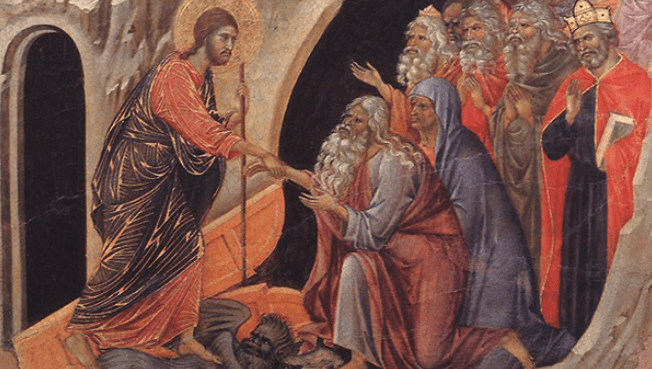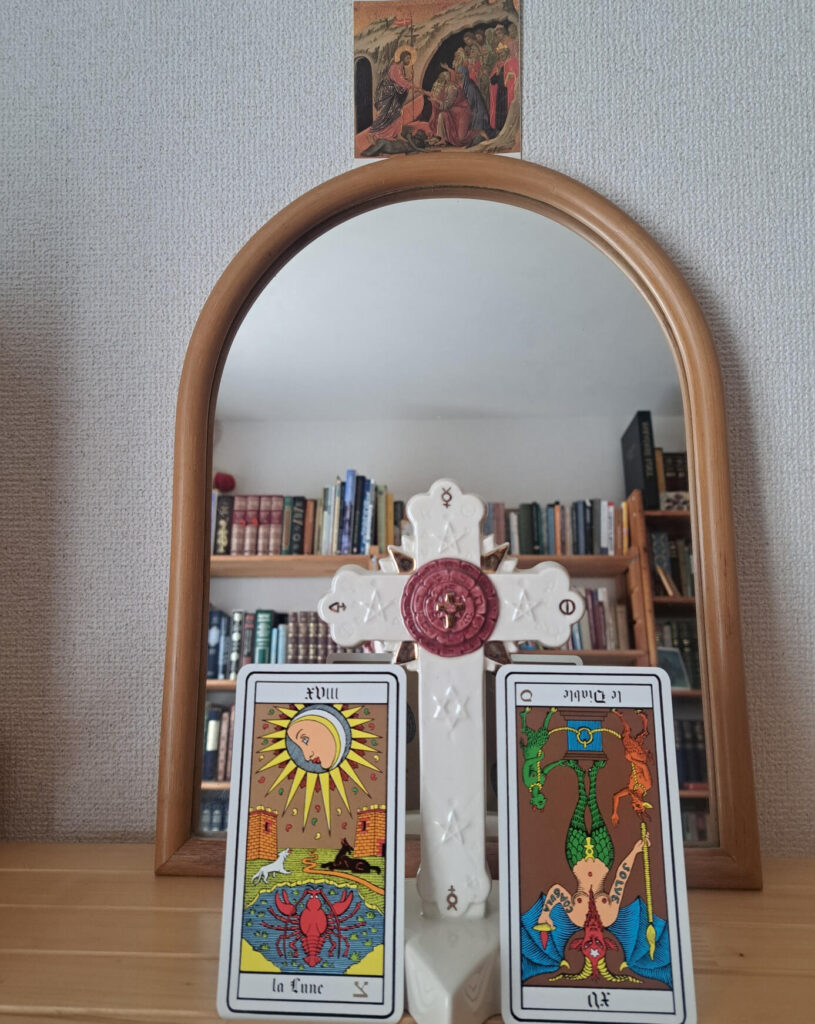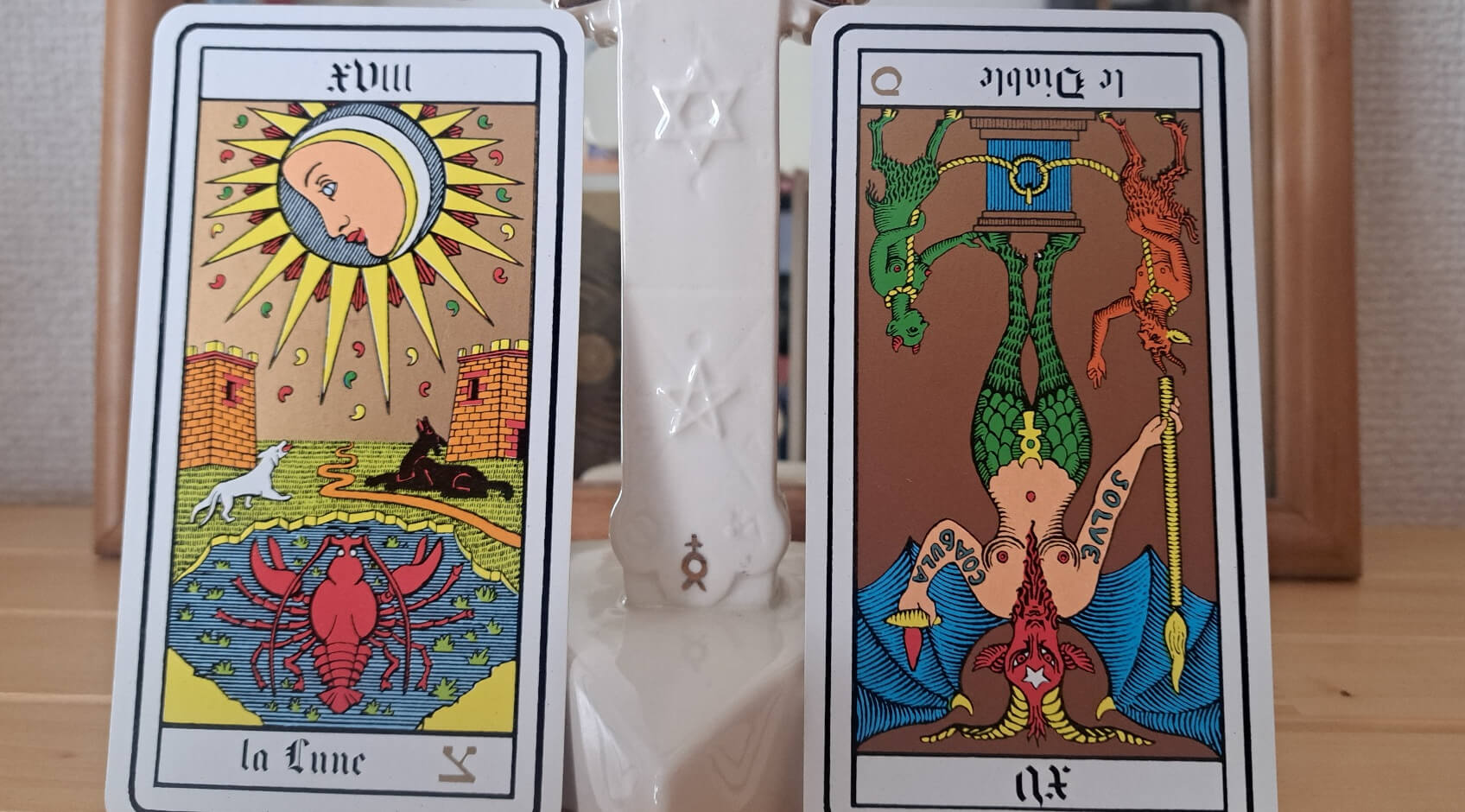According to the Apostles Creed and the Athanasian Creed, after the death and burial Christ descended into Hell. According to tradition, Christ “harrows” Hell to release the souls of the just. In Duccio di Boninsegna’s painting of Christ harrowing Hell, he depicts Christ as trampling on the prostrate form of the (15) Devil.
The (15) Devil, who appears in his pomp on Ash Wednesday, marking the beginning of Lent and the temptation of Christ, reappears on Easter Even, but now reversed, to symbolize his overthrow as the resurrected Lord frees the faithful from limbo.

What is the perennial significance of the Harrowing of Hell? Alan Watts, in his chapter on The Passion in Myth and Ritual in Christianity writes,
The importance of the “harrowing of Hell” is that the power of the Incarnation is retroactive or, to put it in another way, timeless. The coming of Christ is not a truly historical event – a step in a temporal process which is effective only for those who follow. It is equally effective for those who came before, and thus the Descent into Hades is a feature of the Christ-story which particularly suggests the timeless and mythological character of the whole. From another point of view, the descent into the depths is almost invariably one of the great tasks of “the Hero with a Thousand Faces”, of the Christ in his many forms. Hades or Hell may here be understood as the Valley of the Shadow, the experience of impotence and despair in which “I” die and Christ comes to life. The descent is likewise a figure of the descent of consciousness into the unconscious, of the necessity of knowing one’s very depths.
Alan Watts, Myth and Ritual in Christianity, p. 167
It is in reference to the “Valley of the Shadow of Death” that the (18) Moon serves as the Arcana for Easter Even.

Old Testament Reading
The children of Israel walked upon dry land in the midst of the sea; and the waters were a wall unto them on their right hand, and on their left. Thus the Lord saved Israel that day out of the hand of the Egyptians.
Exodus 14: 29-30New Testament Reading
Christ also hath once suffered for sins, the just for the unjust, that he might bring us to God, being put to death in the flesh, but quickened by the Spirit, by which he also went and preached unto the spirits in prison.
1 Peter 3: 18-19
The Collect
Grant, O Lord, that as we are baptized into the death of thy blessed Son our Saviour Jesus Christ, so by continual mortifying our corrupt affections we may be buried with him; and that through the grave, and gate of death, we may pass to our joyful resurrection: for his merits, who died, and was buried, and rose again for us, thy Son Jesus Christ our Lord. Amen
Book of Common Prayer
Liturgical Affirmation
Omnia tempus habent et suis spatiis transeunt universa sub caelo.
Non derelinquis animam meam in inferno, nec dabis sanctum tuum videre corruptionem.
All things have their season, and in their times all things pass under heaven. Thou wilt not leave my soul in hell, neither let thy holy one to see corruption.


